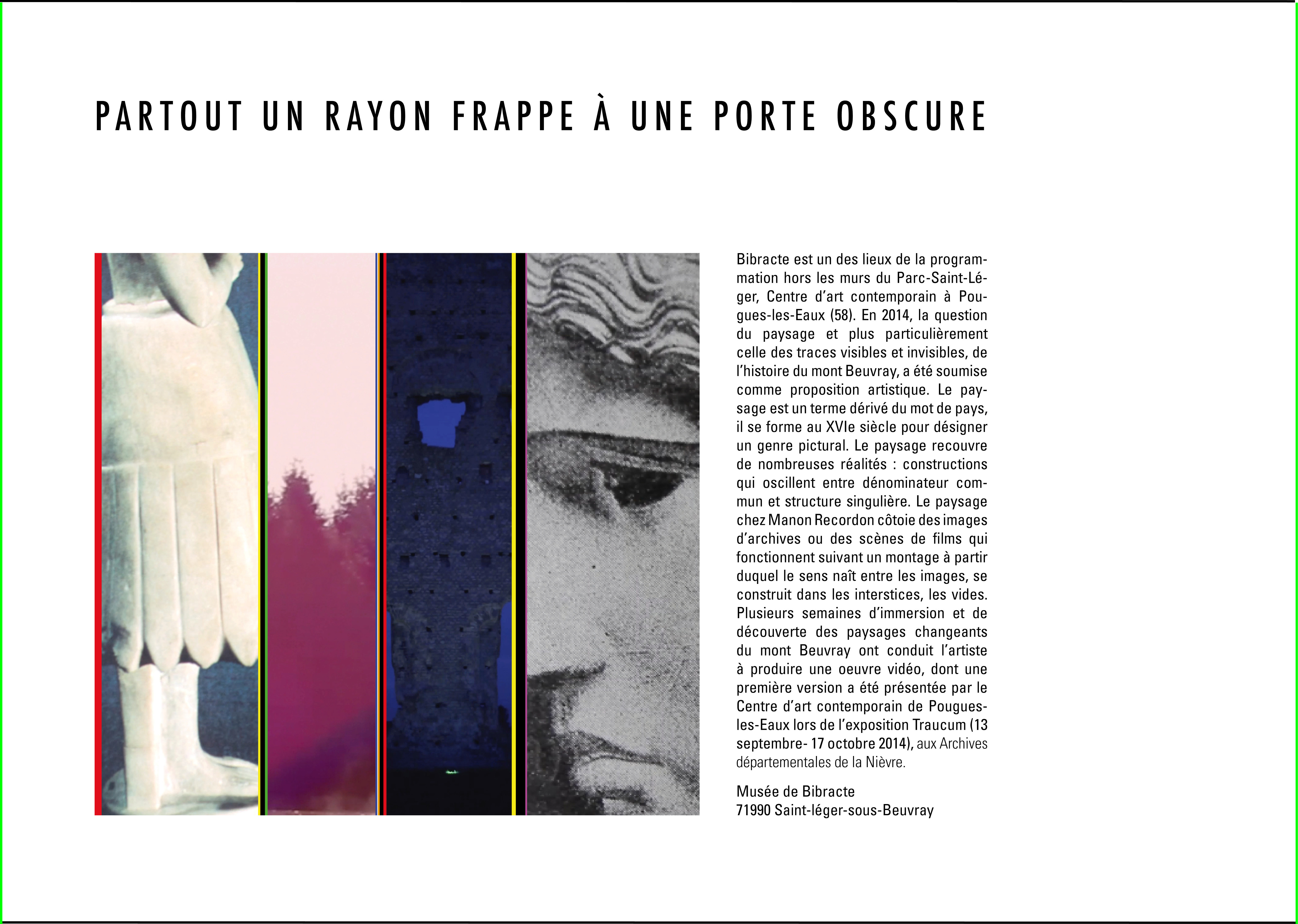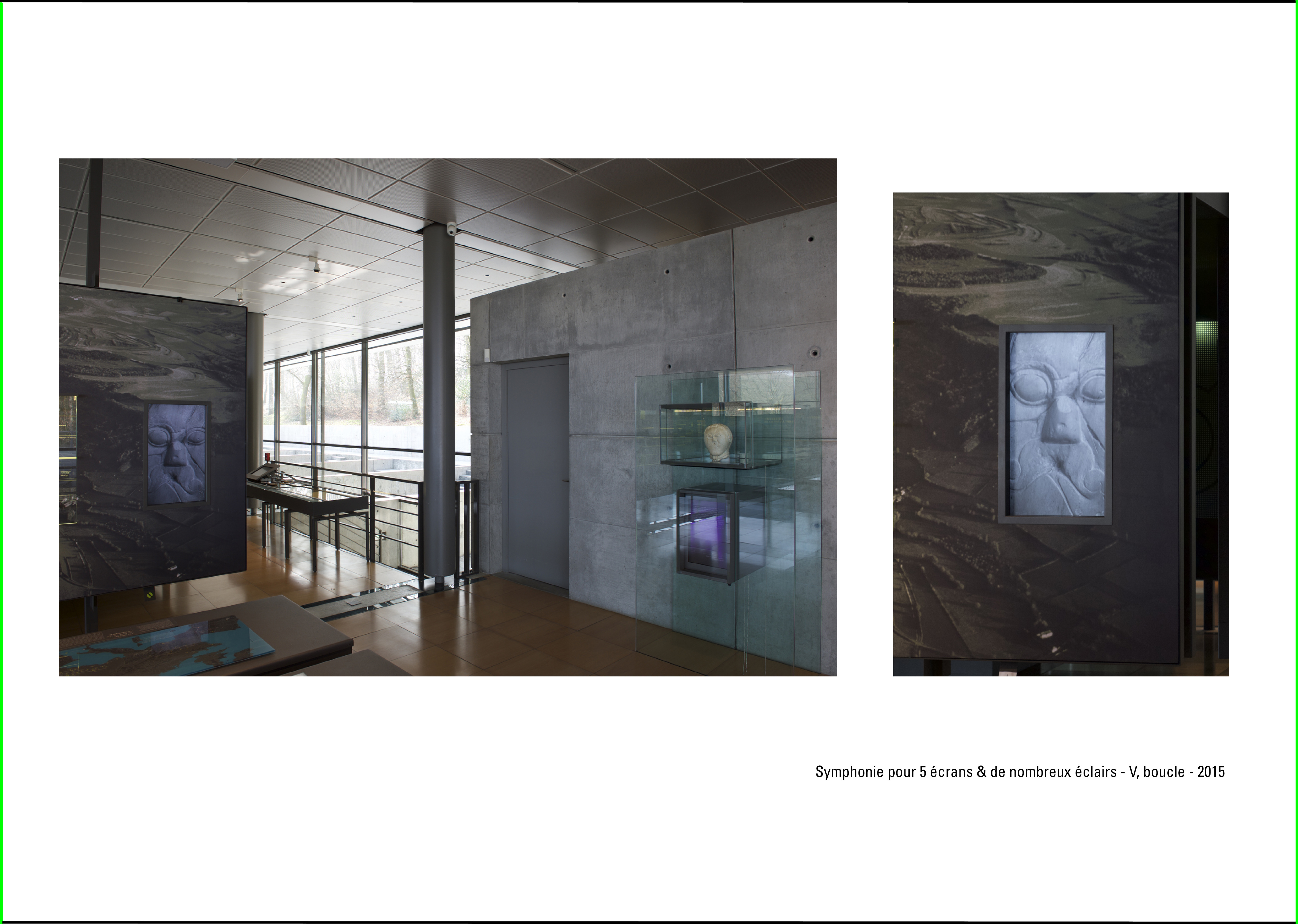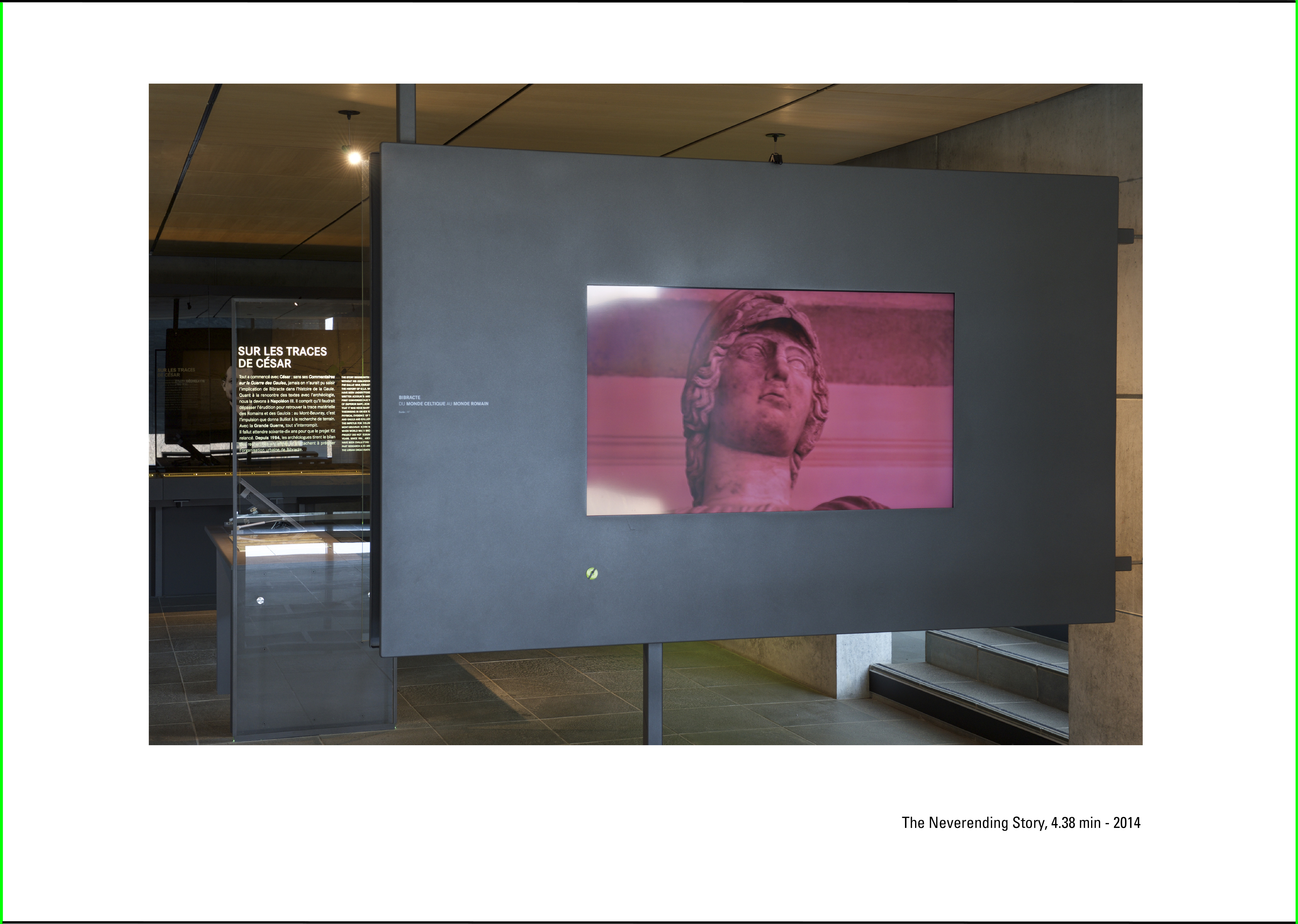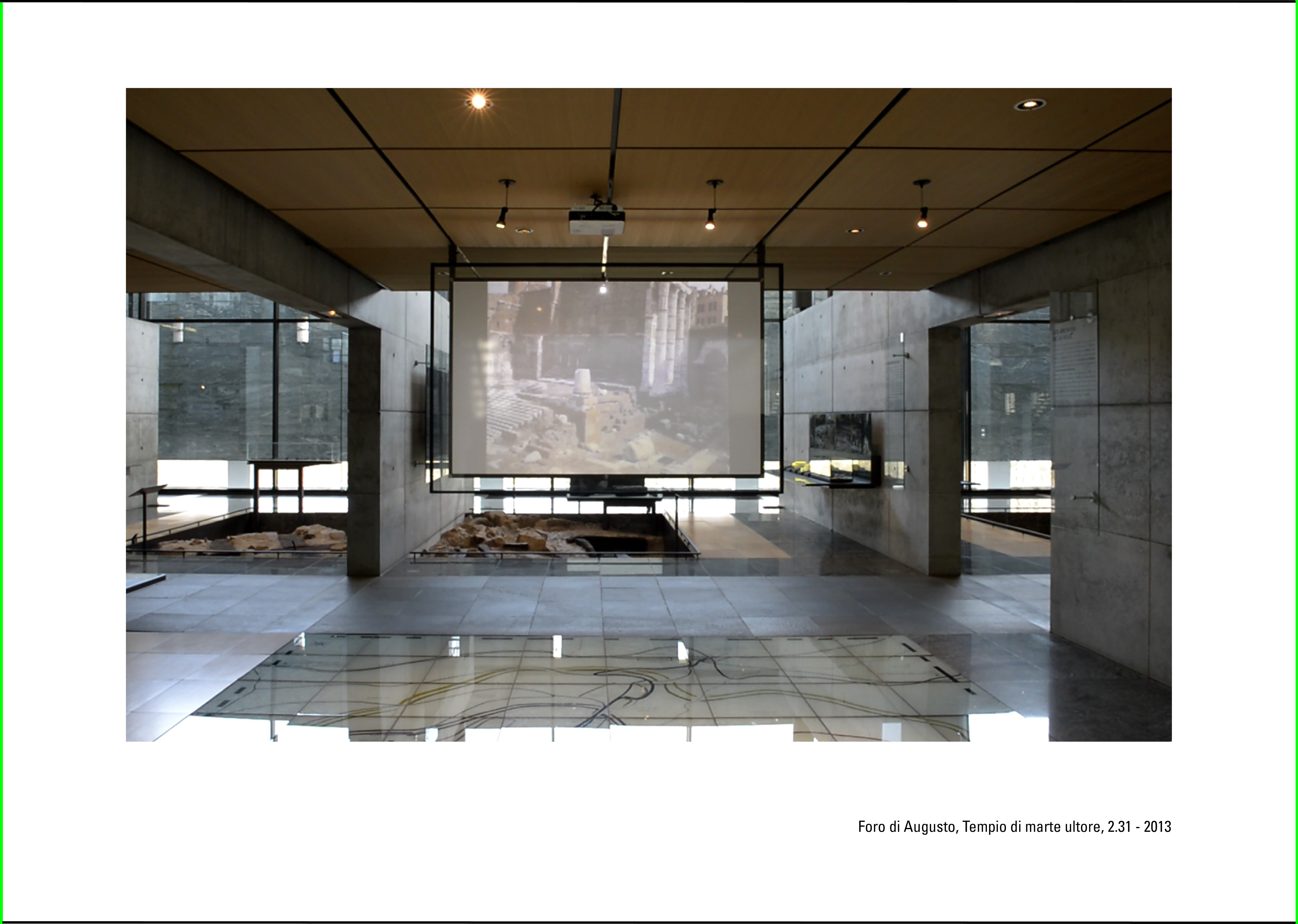
Partout un rayon frappe à une porte obscure
Solo show
Musée archéologique de Bibracte
03-2014 > 03-2015
Curators : Eloïse Vial & Laïla Ayache
Parc Saint léger hors les murs
Comment la géologie et l’histoire remontent-elles à la surface d’un écran
vidéo ?
Cette question hante une large part de ma production récente : comment rendre compte de ces strates historiques, l’écriture de ce qui a été ? En tant qu’archéologue de formation tu utilises le terme « géologie » lorsque moi j’emprunterais le mot « plan » aux fondamentaux de la grammaire cinématographique. La géologie est la science qui en étudiant les strates de la terre, d’hypothèses en hypothèses reconstitue son histoire, le procédé de l’archéologue en somme. Ma manière de travailler est similaire, chaque enregistrement vient s’inscrire sur la ‘timeline’ du logiciel de montage ; en s’associant par strates successives ils reconstruisent une histoire, ils font remonter certains faits, certains bruits, certaines odeurs à la surface.
La relation qui te lie à Cézanne est-elle culturelle ou viscérale ?
C’est un souvenir d’enfance, une impression tatouée sur ma rétine. J’ai souvent croisé ce paysage, on roulait sur l’autoroute, sans jamais vraiment savoir ce que c’était, je regardais les formes, les couleurs, j’admirais. Il m’a hypnotisé, construite. Jusqu’au jour où bien des années plus tard, lors d’un séminaire organisé dans un cinéma à Nice, lorsque j’étais étudiante à la villa Arson, j’ai fait la découverte du travail de Jean-Marie Straub et Danièle Huillet (et d’eux mêmes), et de ce film, Cézanne (Conversation avec Joachim Gasquet). Leur manière de considérer un plan, un texte, une oeuvre a définitivement été inscrite en moi à partir de ce moment-là. J’ai redécouvert les écrits de Cézanne involontairement, par hasard. Lorsque je suis arrivée à Bibracte pour la première fois il y a un an, certaines réminiscences étaient là, flanquées dans le paysage. Alors ces phrases me sont venues en tête, « une ligne partout cerne, tient un ton prisonnier. Je veux les libérer ». Ce qui est assez paradoxal, c’est que je n’ai pas connu Cézanne par ses toiles, mais par cette montagne qu’il a peinte, puis par ce film, ce document.
Propos recueillis par Eloïse Vial
How geology and history are brought to the surface of a screen video?
This question haunts a large part of my recent production: how to account for these historical strata, the writing of what has been? As an archaeologist by training, you use the term "geology" when I borrow the word "plan" from the fundamentals of film grammar. Geology is the science which, by studying the strata of the earth, from hypothesis to hypothesis, reconstructs its history, the archaeologist's process in short. My way of working is similar, each recording is written on the editing software's timeline; by associating themselves in successive layers they reconstruct a story, they bring certain facts, certain noises, certain smells to the surface.
Is your relationship with Cézanne cultural or visceral?
It's a childhood memory, an impression tattooed on my retina. I often came across this landscape, we were driving on the motorway, without ever really knowing what it was, I looked at the shapes, the colours, I admired. It hypnotized me, built me up. Until the day when many years later, during a seminar organised in a cinema in Nice, when I was a student at the Villa Arson, I discovered the work of Jean-Marie Straub and Danièle Huillet (and themselves), and this film, Cézanne (Conversation with Joachim Gasquet). Their way of considering a plan, a text, a work was definitively inscribed in me from that moment on. I rediscovered Cézanne's writings involuntarily, by chance. When I arrived at Bibracte for the first time a year ago, certain reminiscences were there, flanked by the landscape. Then these sentences came to mind, "a line everywhere encircles, holds a captive tone. I want to free them. What is rather paradoxical is that I did not know Cézanne through his paintings, but through this mountain that he painted, then through this film, this document.
Interview by Eloïse Vial
Alors sur la plaque sensible, tout le paysage s'inscrira - 12,39 min - 2015
Centre archéologique de Bibracte - Parc Saint léger










